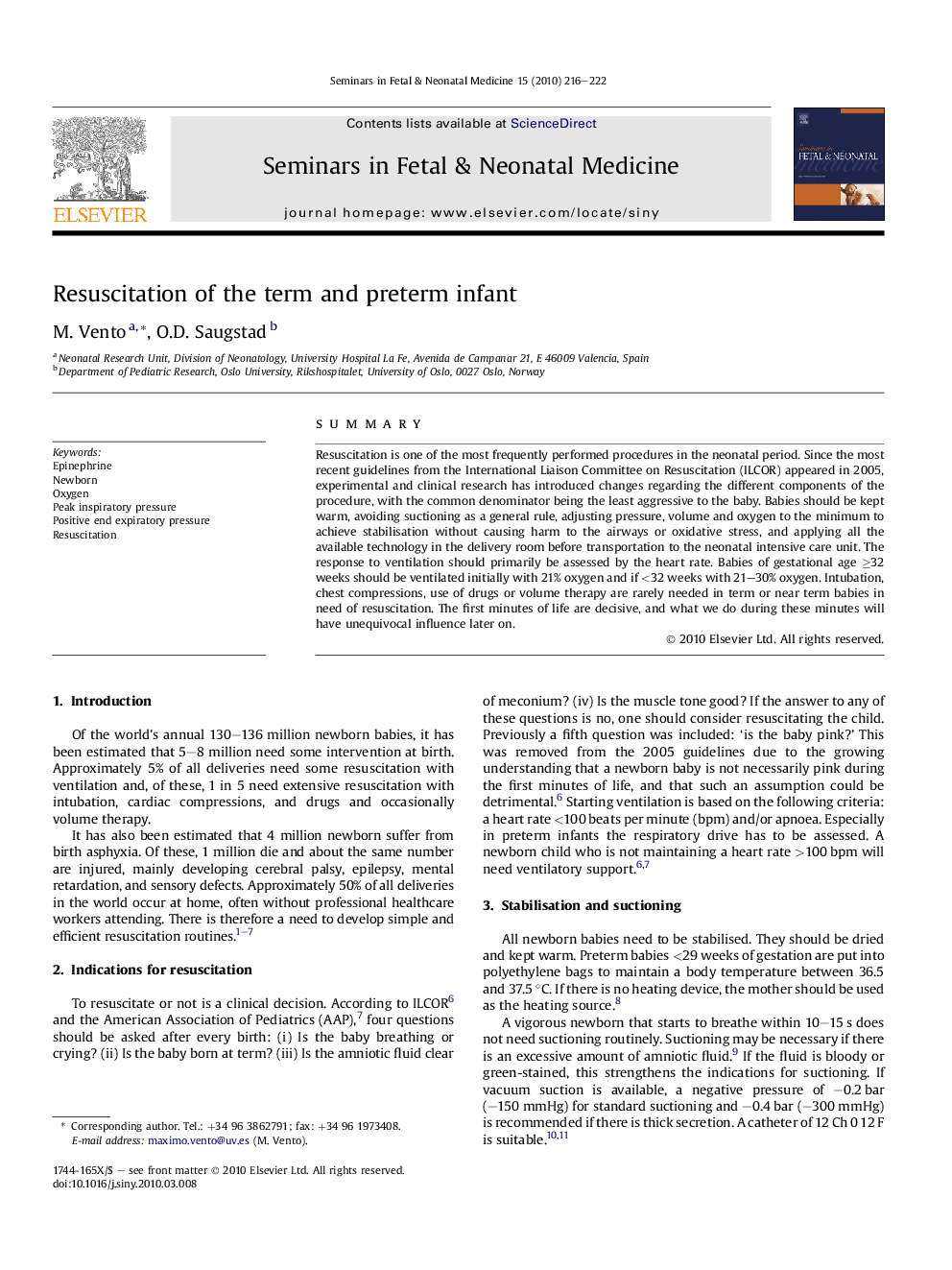| Article ID | Journal | Published Year | Pages | File Type |
|---|---|---|---|---|
| 3974155 | Seminars in Fetal and Neonatal Medicine | 2010 | 7 Pages |
SummaryResuscitation is one of the most frequently performed procedures in the neonatal period. Since the most recent guidelines from the International Liaison Committee on Resuscitation (ILCOR) appeared in 2005, experimental and clinical research has introduced changes regarding the different components of the procedure, with the common denominator being the least aggressive to the baby. Babies should be kept warm, avoiding suctioning as a general rule, adjusting pressure, volume and oxygen to the minimum to achieve stabilisation without causing harm to the airways or oxidative stress, and applying all the available technology in the delivery room before transportation to the neonatal intensive care unit. The response to ventilation should primarily be assessed by the heart rate. Babies of gestational age ≥32 weeks should be ventilated initially with 21% oxygen and if <32 weeks with 21–30% oxygen. Intubation, chest compressions, use of drugs or volume therapy are rarely needed in term or near term babies in need of resuscitation. The first minutes of life are decisive, and what we do during these minutes will have unequivocal influence later on.
